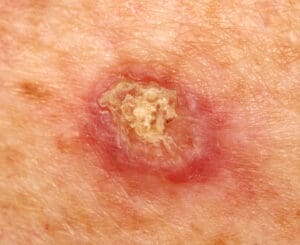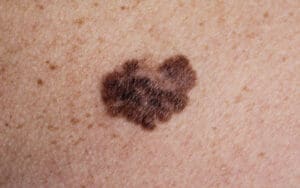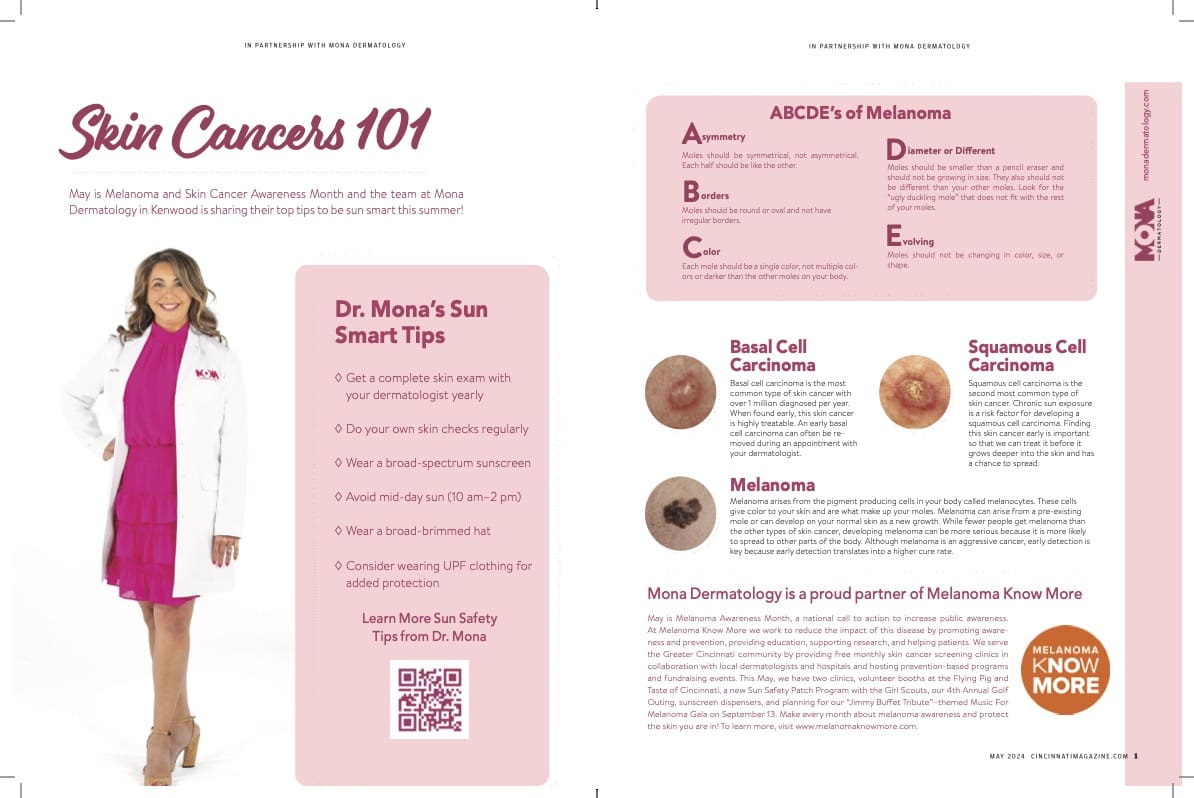Identifying Skin Cancer Spots
May is Melanoma and Skin Cancer Awareness Month and the team at Mona Dermatology in Kenwood is sharing their top tips to be sun smart and recognize skin cancer spots this summer!
Dr. Mona’s Sun Smart Tips
- Get a complete skin exam with your dermatologist yearly
- Do your own skin checks regularly
- Wear a broad-spectrum sunscreen
- Avoid mid-day sun 10am-2pm
- Wear a broad-brimmed hat
- Consider wearing UPF clothing for added protection
Types of Skin Cancer:
Basal Cell Carcinoma
Basal cell carcinoma is the most common type of skin cancer with over 1 million diagnosed per year.
When found early, this skin cancer is highly treatable. An early basal cell carcinoma can often be removed during an appointment with your dermatologist.

Squamous Cell Carcinoma
Squamous cell carcinoma is the second most common type of skin cancer.
Chronic sun exposure is a risk factor for developing a squamous cell carcinoma.
Finding this skin cancer early is important so that we can treat it before it grows deeper into the skin and has a chance to spread.

Melanoma
Melanoma arises from the pigment producing cells in your body called melanocytes. These cells give color to your skin and are what make up your moles. Melanoma can arise from a pre-existing mole or can develop on your normal skin as a new growth.
While fewer people get melanoma than the other types of skin cancer, developing melanoma can be more serious because it is more likely to spread to other parts of the body.
Although melanoma is an aggressive cancer, early detection is key because early detection translates into a higher cure rate.

ABCDE’s of Melanoma
A – Asymmetry
Moles should be symmetrical, not asymmetrical. Each half should be like the other.
B – Border
Moles should be round or oval and not have irregular borders.
C – Color
Each mole should be a single color, not multiple colors or darker than the other moles on your body.
D – Diameter or Different
Moles should be smaller than a pencil eraser and should not be growing in size. They also should not be different than your other moles. Look for the “ugly duckling mole” that does not fit with the rest of your moles.
E – Evolving
Moles should not be changing in color, size, or shape.

